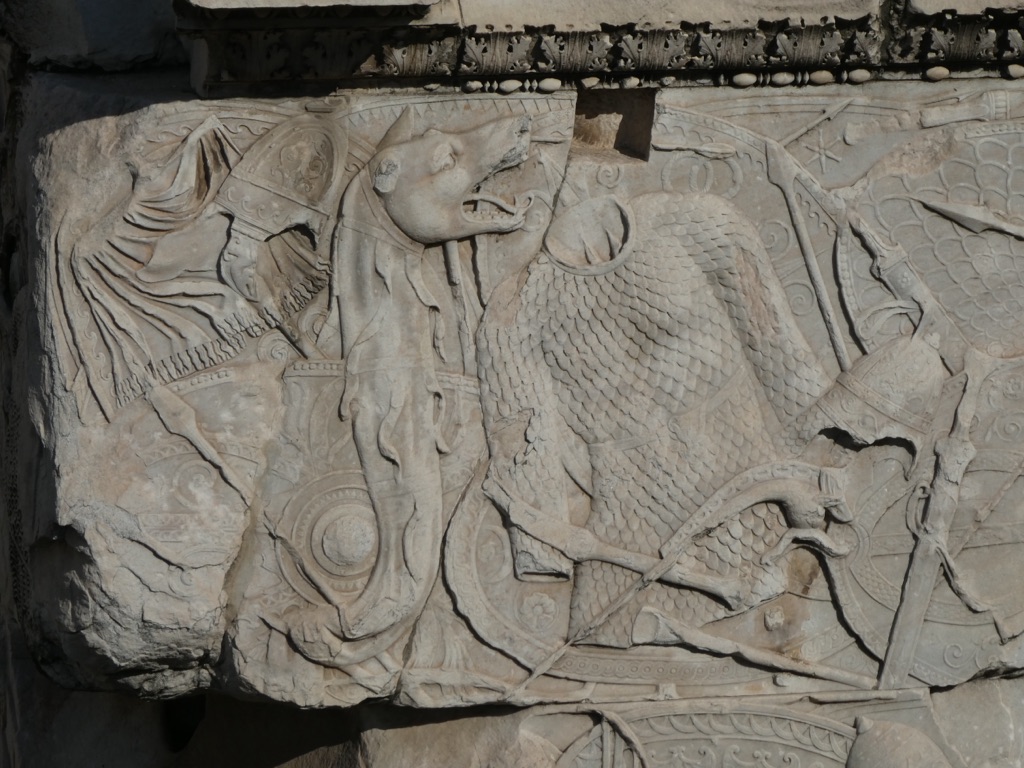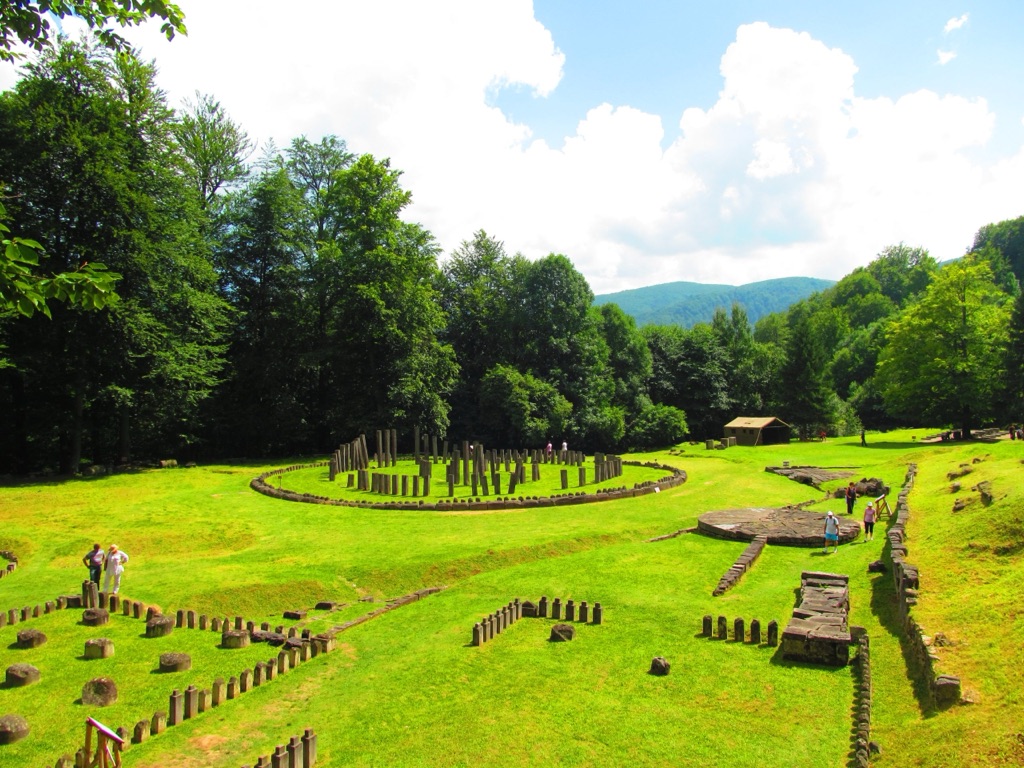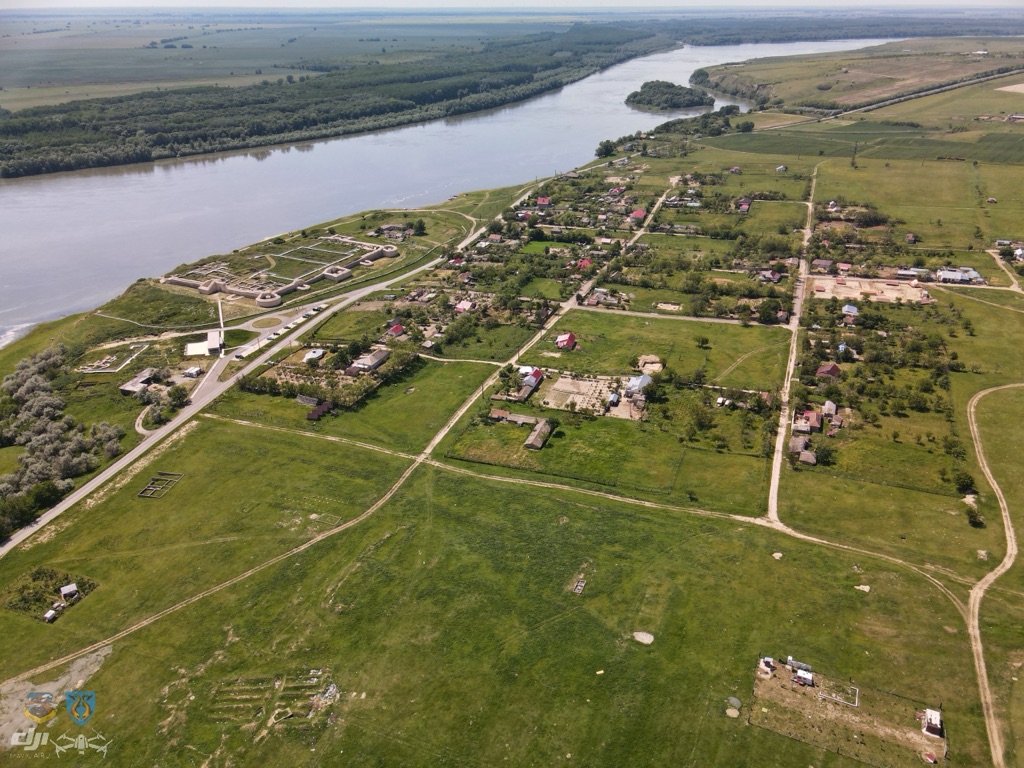Nestled on the banks of the Danube in Romania, the Fortress Capidava stands as a testament to ancient times. It began as a Dacian settlement. Later, the Romans transformed it into a military fortress. For centuries, it guarded the frontier of the Roman Empire. The structure showcases a mix of Dacian, Roman, Byzantine, and even Ottoman influences. Its remnants tell the story of diverse cultures and turbulent history. Today, it serves as a fascinating archaeological site. Visitors can explore its ruins and learn about its past through guided tours and interactive exhibits.
Dacian kingdom

The Dacian Kingdom, known as the Kingdom of Dacia, was an impressive civilization in ancient times. It thrived in what is now Romania, and parts of Moldova, Bulgaria and Serbia, from around the 1st century BC until the 1st century AD. The Dacians were known for their rich culture, expert metalwork, and sturdy fortresses. They spoke the Dacian language, which was part of the Thracian language group. This kingdom had a complex social structure and engaged in both agriculture and trade. A significant figure in Dacian history is King Burebista, who ruled from 82 BC to 44 BC. He managed to unify the tribes and expand the kingdom’s territory. Under his lead, the Dacian Kingdom reached its peak, becoming a formidable force in Eastern Europe.
Burebista’s death led to a fragmentation of the Dacian Kingdom, but it remained influential in regional politics. A century later, under King Decebalus, the kingdom regained some of its former strength. Decebalus proved to be a savvy leader, skilled in both diplomacy and warfare. He tried to maintain the kingdom’s independence against the expanding power of the Roman Empire. However, the Dacian Kingdom faced Roman invasions and finally fell after two difficult wars. Emperor Trajan led the Roman Legions in 101-102 AD and again in 105-106 AD. After defeating the Dacians, the Roman Empire absorbed their kingdom. The assimilation brought the rich Dacian culture and its people into the greater Roman fold, leaving a lasting legacy in the region’s history.
The fall of the Dacian Kingdom marked a significant turning point in the history of Eastern Europe. The Romans established the province of Dacia, which covered parts of modern-day Romania and Moldova. This integration into the Roman Empire led to profound cultural and economic changes. Roman architecture, language, and customs mingled with the indigenous Dacian traditions, creating a unique cultural blend. The Romanization process facilitated the spread of Christianity and the Latin language, laying the foundation for the Romanian language. The remnants of Roman engineering, such as roads and fortifications, are still visible today, attesting to the lasting impact of Roman rule in the region.

Despite the Roman conquest, the legacy of the Dacian Kingdom endured. The Dacians’ expertise in metalwork, particularly in gold and silver, was highly valued in the Roman Empire. Their craftsmanship contributed to the wealth and luxury of Roman society. Moreover, the Dacian warriors, renowned for their bravery and skill, were often recruited into the Roman army, where they served with distinction. The fusion of Dacian and Roman elements gave rise to a distinctive cultural identity in the province of Dacia, which persisted even after the fall of the Roman Empire.
The resilience of Dacian culture and identity is a testament to the strength and sophistication of the Dacian Kingdom. Despite the challenges and changes brought about by Roman conquest, the Dacians managed to preserve key aspects of their heritage. This enduring legacy is a source of pride for modern Romanians, who view the Dacian Kingdom as a foundational element of their national history. The story of the Dacians, from their rise under King Burebista to their integration into the Roman Empire, reflects the dynamic and often tumultuous nature of ancient history. It is a narrative of conquest and adaptation, of loss and survival, that continues to captivate historians and laypersons alike.
In conclusion, the Dacian Kingdom’s history is a compelling chapter in the annals of ancient Europe. Its rise under charismatic leaders, its struggle against the might of Rome, and its eventual assimilation into the Roman Empire illustrate the complex interplay of power, culture, and identity. The legacy of the Dacians, preserved in artifacts, language, and tradition, serves as a bridge connecting the past to the present. It reminds us of the enduring human spirit’s capacity to adapt and thrive in the face of adversity. As we delve into the depths of history, the story of the Dacian Kingdom and its people offers rich insights into the forces that shape civilizations and the indelible marks they leave on the tapestry of human history.
FAQ: Unveiling the Mysteries of the Dacians
What race were the Dacians?
The Dacians were an ancient people belonging to the broader group of Thracian tribes. They inhabited the region that corresponds to modern-day Romania and Moldova, as well as parts of Bulgaria, Serbia, Hungary, and Ukraine. The Dacians are often described as Indo-European in terms of their ethnic and linguistic roots, sharing close cultural and linguistic ties with the Thracians and the Illyrians.
Who are the descendants of the Dacians?
The descendants of the Dacians are primarily considered to be the Romanians and Moldovans of today. Following the Roman conquest of Dacia in 106 AD, the Dacians were gradually Romanized, blending their culture, language, and genetics with those of the Roman settlers. This fusion gave rise to the Romanian people, who, despite centuries of subsequent invasions and migrations, have retained a Latin-based language and many cultural elements that can be traced back to the ancient Dacians.
What country is Dacian Empire now?
The territory once occupied by the Dacian Empire is now primarily within the borders of modern Romania, with parts extending into Moldova, Bulgaria, Serbia, Hungary, and Ukraine. The heartland of the ancient Dacian Kingdom, known as Dacia, corresponds largely to the regions of Transylvania, Banat, and Oltenia in today’s Romania.
Were the Dacians civilized?
Yes, the Dacians were a highly civilized people with a rich culture and advanced societal structures. They were known for their skilled metalwork, particularly in gold and silver, and for their fortified settlements, known as *davae*, which were often located on high, strategic points. The Dacians had a complex religious system, with Zalmoxis being one of their most revered deities. They also practiced agriculture, animal husbandry, and had developed a system of writing. The Dacians’ civilization was recognized by ancient Greek and Roman historians, who documented their wars, society, and interactions with neighboring cultures.
What happened to the Dacians?
The fate of the Dacians was sealed after their defeat by the Roman Empire in two critical wars, the first from 101-102 AD and the second from 105-106 AD, under the leadership of Emperor Trajan. Following their conquest, the Romans established the province of Dacia, which covered parts of modern-day Romania and Moldova. The Roman administration embarked on a massive colonization program, bringing in settlers from across the Roman Empire. This led to the gradual Romanization of the local Dacian population, blending Roman and Dacian cultures, languages, and peoples. Over the centuries, the Dacian identity was absorbed into the broader Roman and subsequently Romanian identity, although many Dacian customs, religious practices, and words survived and were integrated into the local culture.

Sarmizegetusa Regia
Sarmizegetusa Regia was the capital and the most important military, religious, and political center of the Dacian kingdom, predating the Roman conquest. Nestled in the towering peaks of the Orastie Mountains, this formidable fortress showcases advanced engineering and architectural skills of the Dacians. Its complex network of fortifications, sanctuaries, and residential areas paint a vivid picture of a rich and powerful society. Even today, visitors are drawn to the remaining stone structures that speak of a history steeped in mystery and prowess.

